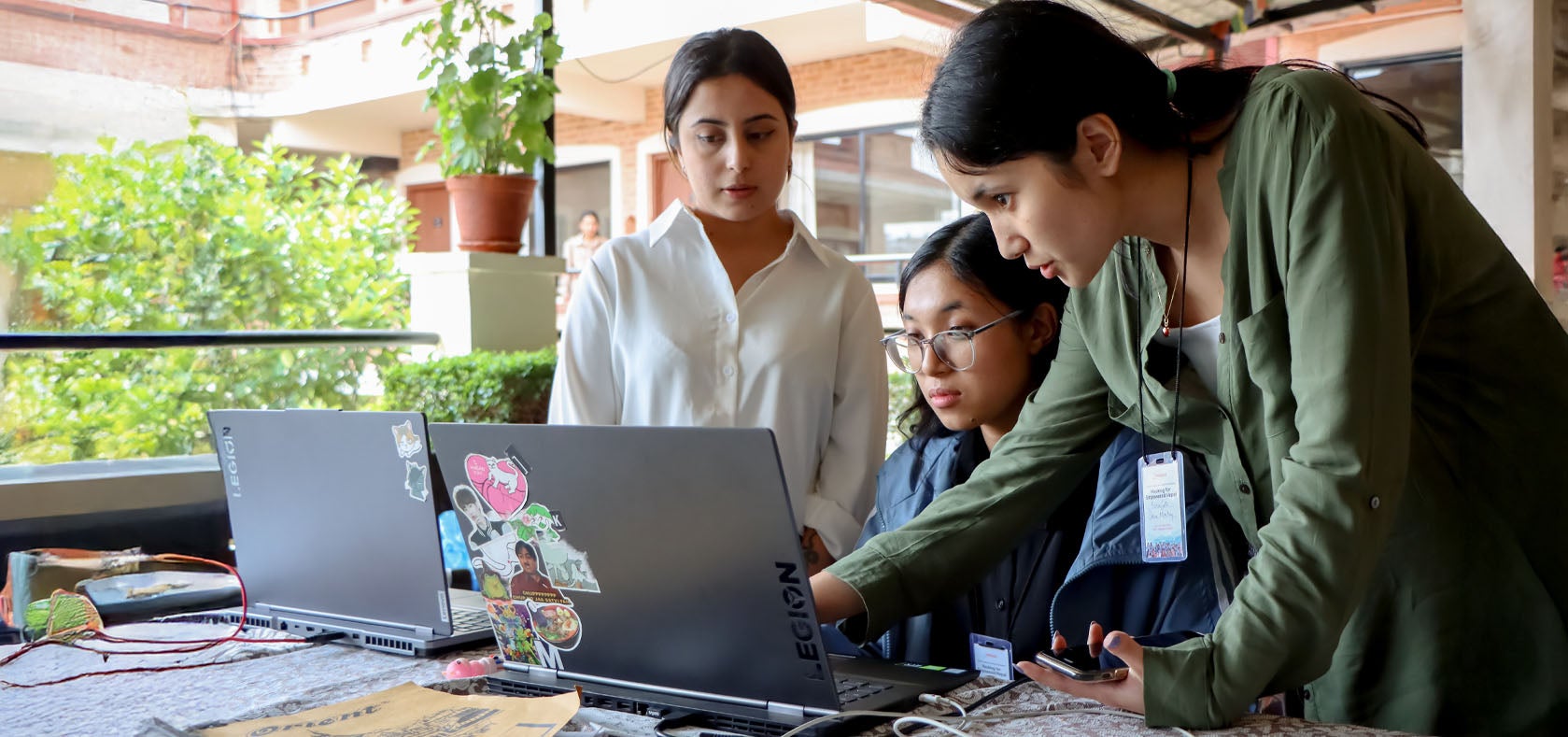Marching her innovation towards digitalization
Date:
Author: Patricia Fernandez Pacheco

“This Dhakiya is a handmade Tharu cultural basket, crafted from forest shrubs, decorated with peacock feathers, vibrant fabric, and woolen decorations,” a woman in Dhangadhi told me last week. When I asked whether I could do online payment, she took a long breath and shared, “Had I known digital skills, I wouldn’t be struggling to sell.”
Her words stayed with me. Women’s limited access to digital financial platforms was not simply her problem but rather a representation of a larger global reality. According to the World Economic Forum, the transforming digital landscape runs the risk of leaving half of the population behind, contrasting with the central promise of leaving no one behind.
The digital economy presents tremendous opportunities for women's economic emancipation in Nepal. Expanded market access, financial inclusion, online payment, mobile banking, and digital financial services improve financial autonomy by guaranteeing safe transactions as well as providing access to micro-loans for expanding businesses. This offers a new avenue to bring the labour market inside the households, which can benefit 1.5 million home-based workers, representing 34.4 per cent of total women in employment (Nepal Labour Force Survey-NLFS 2017/18).
Although digitalization is fast progressing in Nepal, women entrepreneurs like her face specific problems to participate in and benefit from the digital economy. Especially in rural Nepal, on one hand, women have limited access to infrastructure and resources, and on the other hand, digital literacy, technical know-how, and market knowledge add to gender-specific challenges. In Nepal, only 3 per cent of women have used the internet or mobile phone to access bank accounts, and only 13 per cent have made or received digital payments (World Bank 2022). At the heart of this digital divide remains not just the gaps in connectivity but also the gender discriminatory social norms and practices that dictate women's access and decision-making regarding technology and digital spaces, increasing their economic and digital reliance on others, mostly men. Besides, the Information Communication and Technology (ICT) industry in Nepal is marked by a significant gender disparity. While 81 per cent of women over the age of 15 are economically active, only 0.5 per cent are involved in ICT (NLFS 2017/18). Furthermore, the rapid expansion of Artificial Intelligence (AI) worldwide further complicates this divide, with the systems trained on biased data amplifying gender stereotypes. For example, globally, hiring algorithms prefer men over women for Science, Technology, Engineering, and Mathematics (STEM) jobs, reflecting past workforce prejudices.
As Nepal moves toward Least Developed Country graduation, bridging this digital gender gap becomes even more critical. It is not only vital for women’s equal representation in the digital economy and industry but also crucial for the inclusive economic growth of the country. If we don’t take corrective measures, the digital gender divide will not only widen but pose a major obstacle to Nepal’s progress.
The main strategy to tackle this is to advocate for legislative changes for increased investment with public-private partnerships for digital infrastructure, making devices and networks affordable and promoting women’s entrepreneurship and business beyond the local market. Another critical strategy is to focus on digital education tailored for girls and women, including in ICT, right from an early age, coupled with community-driven initiatives and campaigns. Prioritizing inclusive digital policy is crucial to ensuring that women are not left behind in the transition to a tech-driven economy.
It's commendable that the Government of Nepal (GoN) has made some attempts, like public consultation on the National Artificial Intelligence Policy draft. This consultation provides an opportunity to advocate for a gendered approach, being mindful of the ethical challenges and gender-biasedness in AI. But field experiences show these policies alone are not enough. Thus, it is crucial that the GoN work with various stakeholders that stand together, like UN Women, which has prioritized women's access and involvement in the digital sphere. This will align with Nepal’s commitments under the Beijing Declaration and Platform for Action (BPfA), a landmark global agenda for gender equality that the government has pledged to uphold. To accelerate progress, UN Women is mobilizing high-impact initiatives globally under the theme ‘2025: The Year For ALL Women and Girls.’ In this spirit, today’s International Women’s Day 2025 is also being commemorated under the theme, ‘For ALL Women and Girls: Rights. Equality. Empowerment.’ Such collaborations further strengthen the advocacy for gender-responsive policies and frameworks closing the digital gender gap, which is a prerequisite for Nepal’s national and international gender equality and economic development goals.
Furthermore, collaboration with the private sector can play a crucial role in advancing inclusivity by supporting women-led tech startups and ensuring gender diversity in technology access, including AI. Civil society can drive meaningful change through ground-level awareness campaigns on digital literacy and advocacy for equal internet access. At an individual level, if women and girls are supported in exploring digital opportunities, this can help break societal norms.
By taking collective action, we can ensure that women are not just participants but leaders in shaping the future of technology. Nepal can unlock the full economic potential of women as innovators, entrepreneurs, and leaders in the digital age and can March Forward for the Digital Inclusion of All Women and Girls in Nepal.
